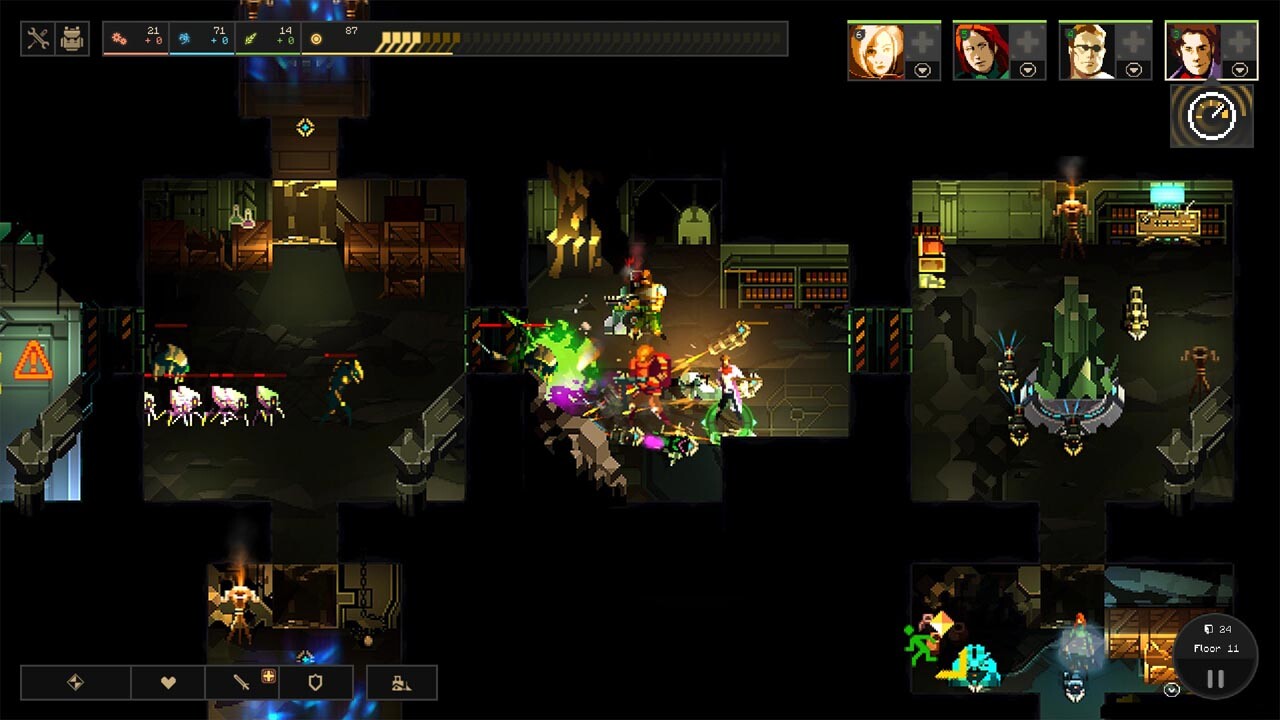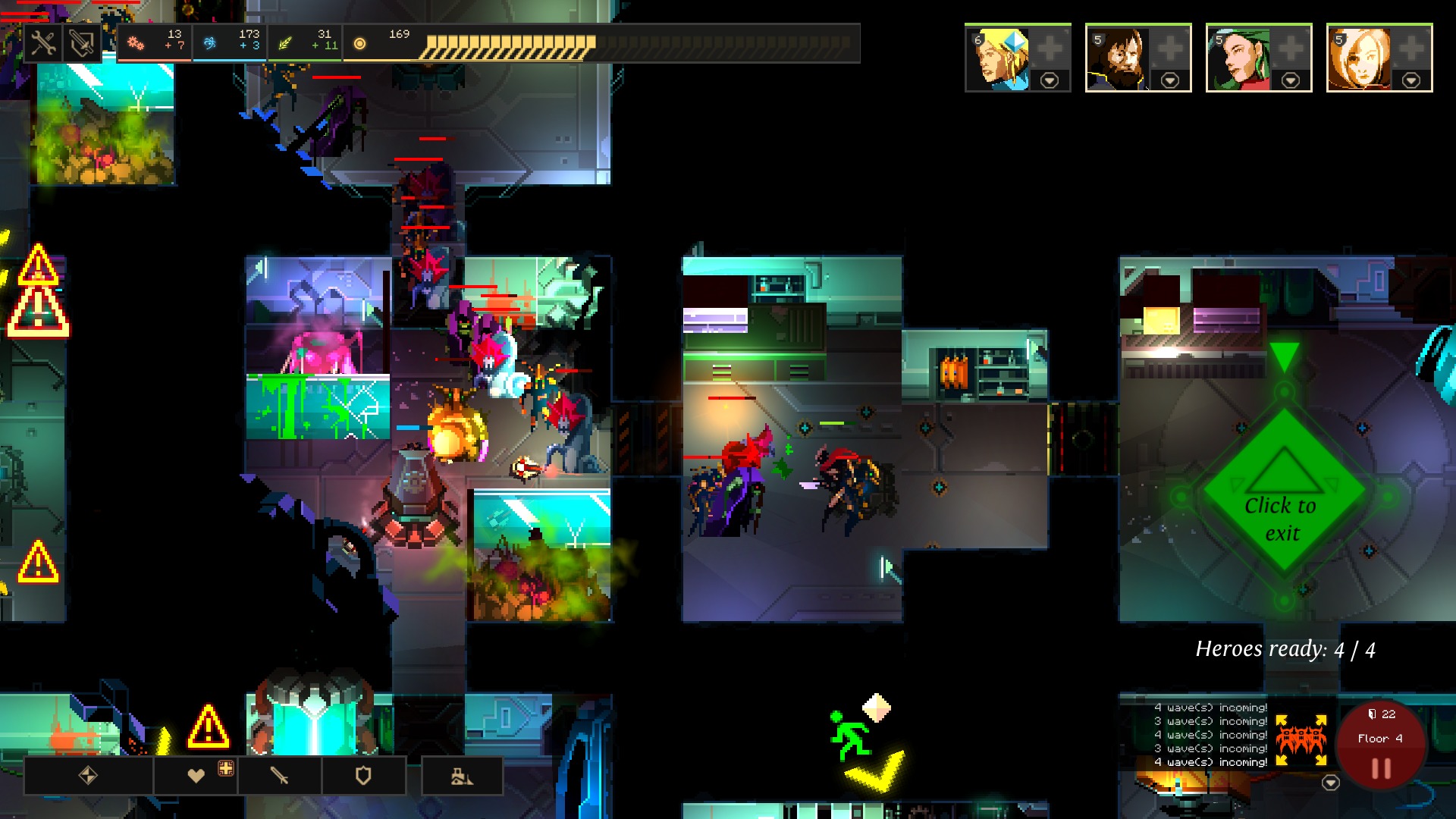

If the many hours needed to beat the game aren’t enough for you, there is a host of extra content to unlock. You’ll rarely have the compulsion for “just one more run” before bed, when it could take longer than the night’s sleep itself. This loss isn’t an easy pill to swallow in Dungeon of the Endless, as a decent attempt will take you up to 5 or 6 hours. In Roguelikes, losing a run and starting over is usually all part of the learning process, and shouldn’t be lamented.

It’s a fine balancing act keeping some resources for a rainy day, and more often than not I ended up wishing I’d spent more as three hours of progress faded away into nothing. Building generators means you get more of a resource each turn, but you’ll just be wasting supplies if you’ve explored most of a floor already. You’ll spend a lot of your time in Dungeon of the Endless trying to maximise your resources. Using each team member and your food effectively is your only hope of proceeding past the first few floors. You can use food to heal them in a pinch (everyone automatically heals between turns) or to level them up and unlock new active and passive abilities. The action can fortunately be zoomed out on and paused at any time, so you don’t need to manically rush between dying allies. None of this is fiddly on console, with an easy to manage control scheme and the ability to group allies at the touch of a button. Your party can be controlled as a group or individuals, defending different choke points or running the enemies into different rooms.

Setup does take a lot of getting used to though, and there’ll be plenty of casualties in this process.ĭespite the doors breaking the game up into turns, combat all takes place in real time. Setting up your turrets and allies up to deal with these situations takes real strategy, but it’s rewarding to see your defences pick apart your foes. Some will try to destroy your defences, some will go straight for the crystal, and others just have a taste for human blood. The baddies come in all shapes and sizes, and all have different preferences in what they’d like to destroy. When the enemies spawn in, the chaos begins. A powered room can’t spawn enemies, so using the Dust you have to turn on the lights is extremely important. Industry can build defences, Food upgrades your heroes, Science researches new turrets and Dust powers rooms. To keep your team and crystal safe, you have plenty of resources that you’ll slowly generate to spend on upgrades. Each “turn” you can open a door with the aim of gathering supplies and finding the exit to the floor you’re on. You start in a single room with the crystal you must keep safe. With some teamwork and all your engineering skill, there’s at least a chance of getting to the next floor.Īfter a brief tutorial, you’re thrown in at the deep end with bricks tied to your legs. This is easier said than done, as hordes of aggressive critters and robots inhabit this abandoned planet. Your goal is to explore and escape this dangerous land, with the power crystal that powered the escape pod. You play as a group of prisoners (selected or randomised at the start of the run) who crash land deep into an alien facility. Dungeon of the Endless definitely has the potential to absorb days of your life too, once you get to grips with the tower defence/strategy gameplay. Their random nature make them the perfect game to replay repeatedly, and I’ve put multiple hundreds of hours into some of favourites over the years. Obviously there are constantly updating multiplayer games, that suck you back in time and time again but for the more single player focused among us there are Roguelikes. Most of us at some stage will have had a game that they keep coming back to, its familiarity a warm embrace after a tough day. Some video games seem to have an endless amount of replayability.


 0 kommentar(er)
0 kommentar(er)
